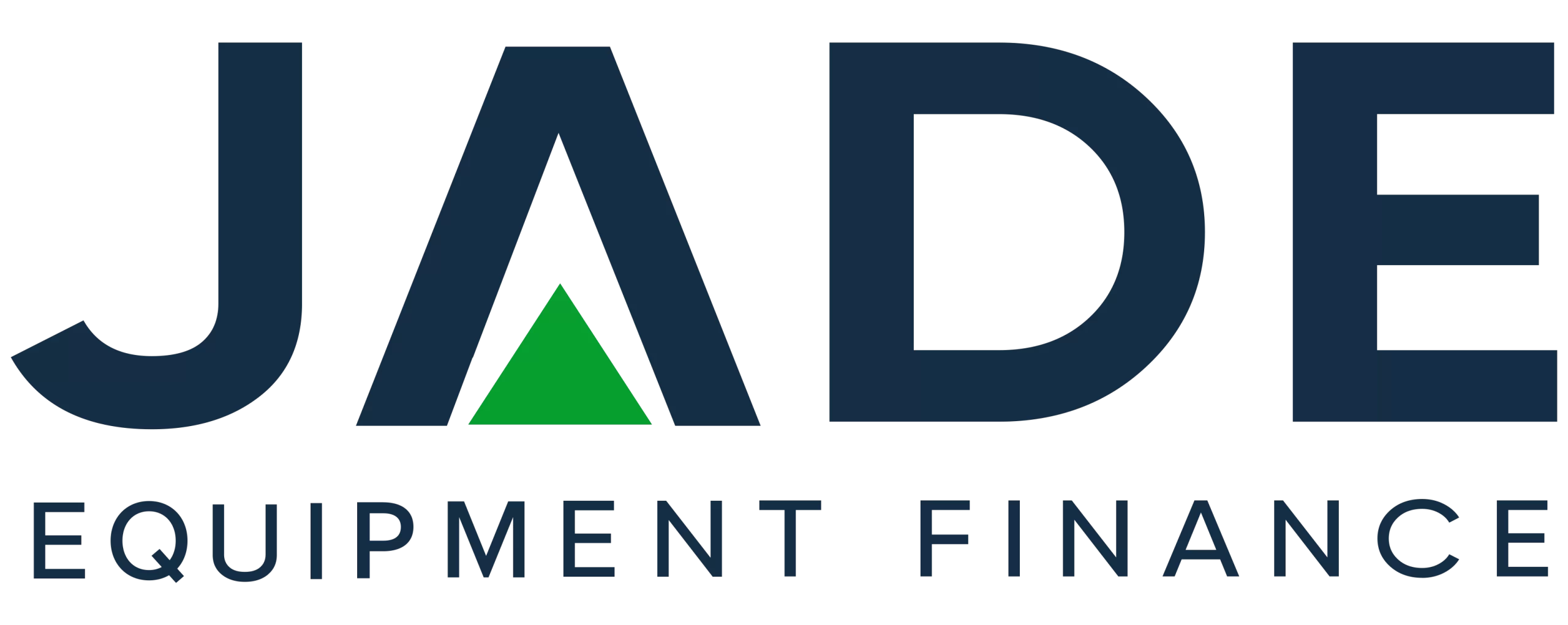The Federal Treasurer brought down the Federal Budget on 6 October. After passing the House of Reps the Budget Bill was accelerated through the Senate on 9 October. So now the measures are in law, businesses can start taking advantage of their individual operations. One of the key measures relevant to equipment acquisitions is temporary full expensing.
Our Jade Equipment Finance customers will likely be most interested in the changes to the Instant Asset Write-Off scheme (IAWO) and temporary full expensing. Many have upskilled their accounting knowledge over the past 6+ months in regard to IAWO after it was introduced back in March.
Now it’s time to get your head around the definition, criteria and rulings in regard to temporary full expensing. Knowing what it is, which companies and assets it applies to and how it differs from IAWO may help you in deciding how you approach your equipment purchases.
While we always advise that customers refer to their accountant in regard to choice of finance product and other financial advice, it’s can be helpful to have your own knowledge bank well-stocked.
We’re providing this explainer to assist you and don’t worry, we’re keeping it as simple and straight-forward as possible.
Definition
Full-expensing is essentially the same as IAWO as a form of accelerated asset depreciation. Inclusion of ‘temporary’ refers to this having a timeframe. It’s not a permanent change to the ATO guidelines around asset depreciation.
Under the existing/normal ATO rules, assets are depreciated at a set percentage over several years. The full cost of purchase cannot be claimed in the year the asset was acquired.
Temporary full-expensing means the full cost of the asset can be claimed as a tax deduction in the year of purchase. Qualifier – eligible assets and eligible companies and for limited time as we explain below.
The concept essentially is that by increasing tax deductions in a year, the taxable income of the business is reduced, this boosting cash flow. The business won’t have to find as much to pay their company tax and therefore will have more funds to spend and hence boost the economy.
The stimulus side of the measure is to motivate, entice and inspire businesses to make investments by financing business equipment and assets. By making purchases they are in turn stimulating the business of the seller. And so the cycle goes on.
Differentiation
To get a clear and simple differentiation between temporary full expensing and IAWO, we went to the source – the ATO. Not surprisingly, others had asked the same question and the ATO had provided a response in the community forum feed which we are sharing.
The differences relate to the size of the business, in terms of turnover, that can take advantage of the measures, the cost of the assets and the timeframe.
- IAWO has a maximum value of assets of $150,000.
- Temporary full expensing does not have a limit on the cost of assets.
- Businesses with turnover (aggregated) under $500 million are included in the IAWO. This was first introduced in March with 30 June deadline which was further extended to 31 December 2020. That deadline has been pushed out in the Budget to 30 June 2021.
- Businesses with aggregated turnover under $5 billion can utilise temporary full-expensing.
- The timeframe for temporary full expensing is for eligible assets purchased after the Budget was officially brought down, that is 7.30pm 6 October 2020 AEDT. The assets must be purchased, installed, commissioned and operating in the business by 30 June 2022.
Determination
There is one more determination and that is in regard to the assets, or equipment that you intend to purchase. Differing treatments appear to be included for new and used equipment.
- New assets appear to be included in temporary full expensing measure.
- For businesses with $50 million max turnover, used equipment also appears to be included.
- Operators with turnover between $50 million and $500 million, it appears that the eligible assets includes used equipment with cost below $150,000. Purchase must be before 31 December 2020 with the equipment operational by 30 June 2021
Decisions
The final element to consider in acquiring assets under these Budget measures is the option of the finance product. Jade Equipment Finance offer the full range of commercial finance facilities for the acquisition of equipment: Chattel Mortgage, Leasing, Commercial Hire Purchase and Rent to Own.
In order to depreciate your equipment as an asset and claim the tax deduction, the equipment needs to be entered on the business’ books. On the balance sheet as an asset/liability.
Both Rent to Own and Leasing are off-balance sheet finance facilities. If you purchase equipment with these loan products, that equipment remains on the balance sheet of the finance company. It is only transferred to your balance sheet when the loan is completely finalised.
Chattel Mortgage on the other hand is an ‘on balance sheet’ loan. When your acquire equipment with a Chattel Mortgage, you take ownership from the time of purchase. The equipment appears on your balance as an asset/liability and therefore can be depreciated via IAWO or temporary full expensing or as per other rulings.
Hopefully this information has assisted with your understanding of what benefits your business may realise from some of the budget measures, in relation to equipment purchases. Refer to your accountant to check which way is best for you to go and contact us for quote on your finance.
Contact Jade Equipment Finance on 1300 000 003 to discuss finance.
DISCLAIMER: INFORMATION, DETAILS, SPECIFICS, GENERAL COMMENTS, MATERIAL AND DATA THAT IS POSTED IN THE ARTICLE HAS BEN ACQUIRED THROUGH PUBLICLY ACCESSIBLE SOURCES INCLUDING OFFICIAL WEBSITES AND ANNOUNCEMENTS. THE INFORMATION IN REGARD TO GOVERNMENT POLICIES, THE BUDGET, SCHEMES, MEASURES, MANUFACTUER GOODS AND SERVICES AND OTHER TOPICS IS PROVIDED FOR GENERAL INFORMATION AND NO LIABILITY ACCEPETD FOR ERRORS OR MISREPRESENTATION. INDIVIDUALS ARE DIRECTED TO THEIR OWN FINANCIAL ADVISORS FOR SPECIFIC FINANCIAL ADVICE. THIS ARTICLE IS NOT DESIGNED AS THE SOLE SOURCE FOR MAKING FINANCIAL DECISIONS.


